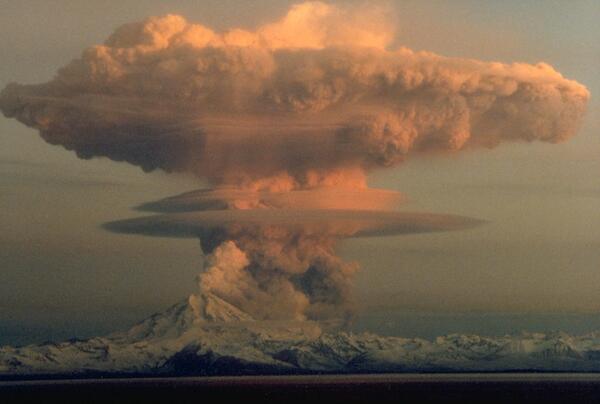Annotated photo of Bogoslof Island showing effects of eruption
Annotated photo of Bogoslof Island showing effects of eruptionAnnotated photograph of Bogoslof Island showing the cumulative effects of 2016-17 eruptive activity. A layer of fine muddy appearing ash drapes most of the landscape and covers pre-existing vegetation. The dashed line indicates the area excavated by explosive eruptive activity so far.

































